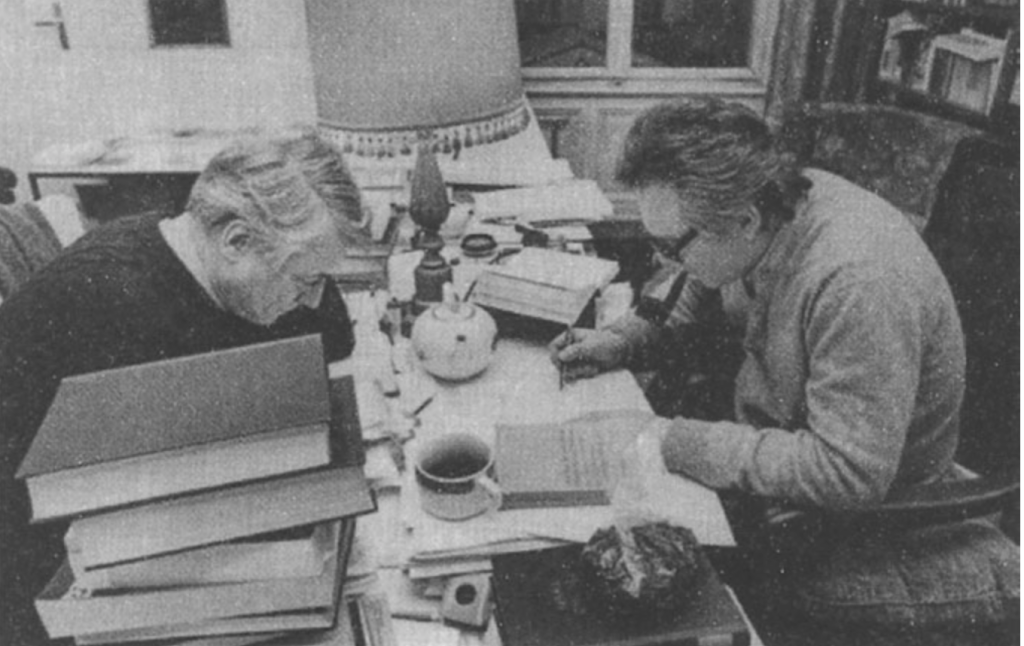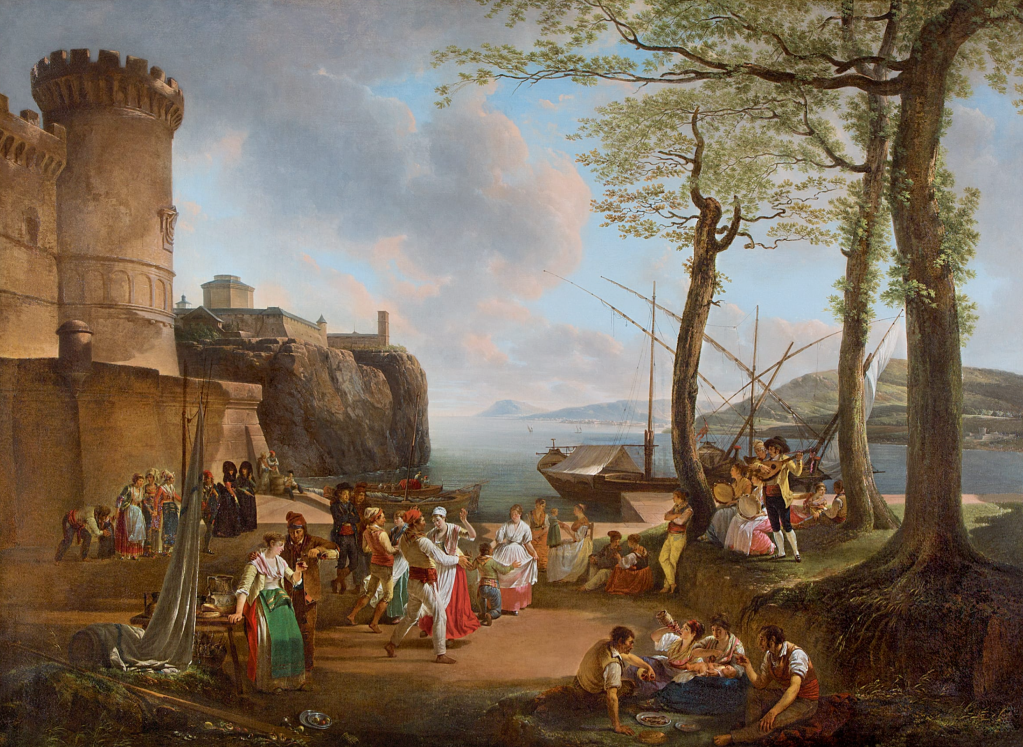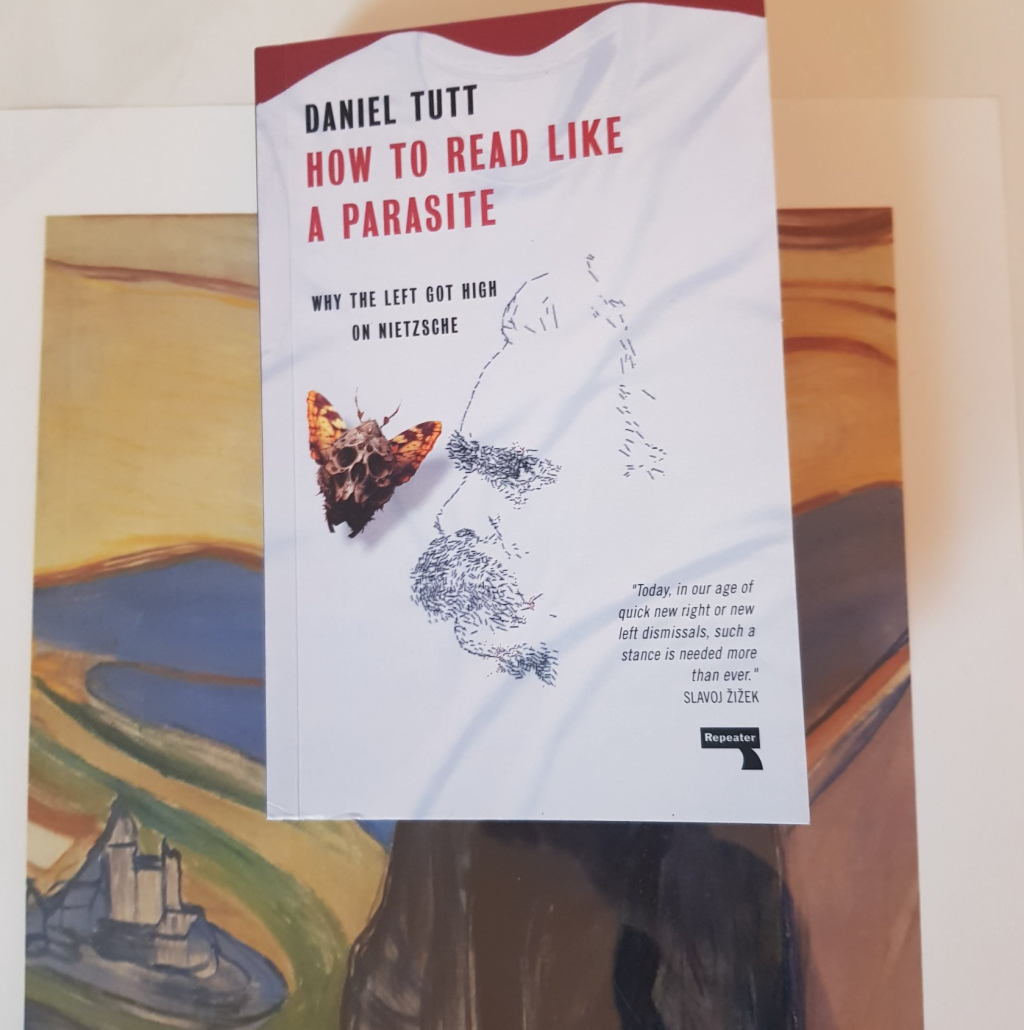In Group Psychology and the Analysis of the Ego, Freud says that “each individual taken independently is a constitutive part of different crowds.” I understand this in two ways: the individual is a part of different crowds in the abstract sense that the crowd is a part of the subjective process in some way. The crowd is a chaotic assemblage that must be dealt with in the process of becoming an I and in the dissolution of the I (more on this later). Secondly, in a more empirical sense, the crowd is a collective formation that provides an important ground for understanding man’s relationship to sociality and the way that desire, affect and identification function.
Some opening premises: the crowd is constitutive of the individual. The individual possesses an inner crowd which is never commensurate with the intersubjective relation between different I’s in any given group. The crowd bursts the seams of intersubjectivity, exposing the individual to the dimension of the Real. This excessive dimension of the other is revealed in the prisoner’s dilemma, a classic thought experiment influenced by game theory.
As is well known, the prisoner’s dilemma provides the means by which a theory of ethics and time emerge for Lacan and for Badiou. The basis of the dissolution of the I and the basis of subjectivization in an ideal sense is realized in a proper solution to the prisoner’s dilemma. I want to argue that this solution helps to solve the problem of the crowd and its negative difference from the collective. In other words, the prisoner’s dilemma helps us to understand how logical time is produced and it shows a proper way of dealing with the crowd.
As Porge has noted, the difference between the Freudian crowd and a collective (think here a militant collective or a psychoanalytic cartel) is dependent on numbers. For Lacan, the cartel is structured on the idea of the plus one, making the collective either 5 (4 + 1) or 6 (5 + 1) — no more and no less. The plus one here functions as an absent leader in a certain sense. Remember that for Freud, what verifies that you have a crowd is the panic induced by not having a leader. Thus, a crowd is realized in the relation between the I’s of the individuals and its leader. Logical time, on the other hand, is different than the crowd in that it finds its temporality with the dissolution of the I’s, or of the individuals. This dissolution of the I’s is, paradoxically, is what creates a social link out of something that is not in-common.
The first question that comes to mind here is whether the scenario of the prisoner’s dilemma actually has a leader? In some sense this is an ambiguous question because the warden sets the place, i.e. the symbolic, but he does not occupy an ego ideal where identification occurs as you have with the leader in the scenario of a crowd. The crowd is further ambiguous because the leader is absent, so the question is more like: in what sense do the prisoner’s need a leader? The answer is that they do not need a leader in fact in part because the entire point of the leaderless crowd is that the individual narcissistic relation functions as a stand-in for identification with a master leader or chief. This is a point that would have to be examined in a separate essay all together.
It is more accurate to say that the warden is an assembler and not a leader as he chooses the prisoners, and he is a witness to their logical process. The warden does not decide if the prisoner’s are correct in their logic by standards that are concealed to the prisoners themselves. Rather, the logical answer(s) provided by the prisoners, or the means by which they escape the prison is of their own making, and not idiosyncratically decided by the warden. The rules are transparently given in the prisoner’s dilemma whereas in a crowd the absence of the leader leaves the collective with no means by which to escape the anxiety or the panic left in the wake of the leader.
This latter point is important to Mikkel Borch-Jacobsen in his text, The Freudian Subject, he argues that the crowd is what dissolves the I because the operation of identification is rooted in a rivalrous impulse to replace the other. So instead of desire being about ‘to have’ an object as we find in Lacan, desire is about ‘to be’ in Borch-Jacobsen’s reading of Freud. Identification is what annihilates the I, not an object identification that is outside of this interior rivalry-based identification. So in some sense, for Borch-Jacobsen, the subject never quite escapes imaginary aggression as it remains the constitutive aspect of the subject.
Why is the crowd important for Freud? In Massenpsycholygie the crowd is after all, “seemingly a marginal phenomenon or even a transgressive one with respect to normal sociality – manifests the deepest essence of normal sociality better than social institutions do.”[1] In opposition to Le Bon’s landmark text, The Crowd, Freud argues that sociality is reduced to its zero degree in the formation of the crowd. The crowd, Freud says, “lays bare the unconscious substratum” that all its members have in common and through which they belong to a single “race.” The crowd acts as a single individual because its members are driven by an “ancestral unconscious”. What the crowd then presents is a restless and open question for the subject and its relation to sociality as such
Importantly, the crowd has an affective and an identification procedure. For Borch-Jacobsen, it is identification that precedes affect, whereas for Lacan and for Freud, the opposite is the case. Borch-Jacobsen argues:
“We must make no mistake about it: by declaring that sympathy proceeds from identification, Freud in no way means to make affect an effect of mimesis; quite the contrary. The concept of identification, as he uses it, has precisely the function of reversing the mimesis-affect relation implied in the concept of sympathy. It signifies that affect precedes mimesis instead of being produced or induced by it.[1]”
The prisoner’s dilemma interests me in this regard because it deals with the problem of identification first and foremost, although the affect of anxiety (which is induced by haste) is important, I would argue that what interests psychoanalytic readings of the prisoner’s dilemma is the question of identification and how subjectivization functions within the various scenarios of the dilemma.
Let’s lay out the basic parameters of the prisoner’s dilemma:
Three prisoners are given discs by the prison warden placed on their back and one is unable to see what color their own disc is, so they have to infer based on the other two’s reactions and the visible color of the discs of the others what the color of their own disc is. There are black discs or there are white discs. What we know and the prisoner’s do not know is that each of them are given white discs. They are required to give a logical account to the warden of what the color of their own disc is and if they are correct they are set free. You can see how this presents a number of intersubjective tropes and themes at the outset.
The way that this is broken down and analyzed by Lacan is broken down in three moments, or step-by-step logical options that are followed. The general structure is as follows:
- The instant of the glance — each prisoner glances at the other’s colors.
- The time for comprehending what their own color may be.
- The moment of concluding. This is the moment of subjectivizing, when I must seize myself as “I.” At this moment, the subject must act on an insufficient knowledge of the other. This point of insufficient knowledge is the basis of every ethical act. It is at this point that several options come about.
Firstly, there is the logic of “I see two white discs” which is the same for all three prisoner’s, so they all start to walk at the same time. But this walking at the same time annuls their conclusion because they still have insufficient knowledge to arrive at an answer, so doubt is introduced. They are all forced to stop again because they are all in the same situation at this point and they realize a certain equality formed on an inherent lack of knowledge.
They think again, which is what Lacan calls the suspended moment. This suspension or scansion is ‘immanent to the logical process’ and it presupposes a certain panopticism that is in fact blind to time. For Badiou, this reading is wrong because if A sees that B and C are also headed towards the door, he can no longer conclude logically, because his reasoning included the immobility of the other two.
At this point, if we assign identity to each of them as A, B and C.
1. What happens to A during this process of reasoning is ‘the ontological form of anxiety’ according to Lacan, and what causes anxiety is that he will not be able to reach a conclusion.
2. The hesitation of B and C do not show anything but a sense of anxiety as well, and what A realizes here is that he can deduce nothing logically so he has to close the time for comprehending by acting. A has to end his thinking by an act. A is sure of his act but not of his reasoning. This is the anticipatory certitude element to the dilemma.
The conclusion here is that A’s line of reasoning depends on B’s and C’s hesitation. Badiou breaks down five logical moments of the subjective process:
- The time to understand: before mobility sets in. I don’t see black discs and I therefore decide.
- The time to conclude: when I step forward as to my own mark in front of the others subjectivation occurs for Badiou — importantly, step four is where subjectivization occurs for Lacan because for Badiou, this prior moment of haste is the first moment of real induction of the subject. Ultimately, the difference comes down to two different reading os anxiety.
- The representation of haste: when I see that the others have begun to move, I now anticipate certainty.
- The scansion: all of the others stop again and objectify the premises of their reasoning. For both Lacan and Badiou, it is in the halts that come after the act where intersubjective truth begins to emerge. A now reaches a universal truth from his subjective decision, and these halts are what make the act universal.
- The reinitiating of their walk, this time governed by a certainty of their logical proof.
For Badiou, what is most important is the moment of haste which exposes the subject to the real. What this means is that the subject exceeds the symbolic (splace) by exposing himself to the real and he opens an alternative for action and a new time. The subject opens this space through the decision and and act that occurs as an excess because the subject can only wager on the time of the other (on his time to understand) hurried as he is by the real of the situation which will set free only the first one to exit.
The problem of identification is therefore solved when the I in question defines itself through a subjectication of competition with the other. But this is a psychological and temporary holding pattern, it is not the ultimate fate of identification. In fact, through the act we open a new time, we have the basis of ethics and we have the basis of a new social link. The subject for Badiou is founded in haste and then has to put into consistency the haste of the situation he finds himself in, which is a situation where there is an insufficiency of knowledge. So the (s)place that is set by the warden is not exactly an encyclopedic too-much of the symbolic, but in fact is a situation that is governed by an inherent lack of knowledge of what to do. There is a necessity to do something albeit there are procedures and ethical ways of acting on the lack of knowledge. While the first act is one that is based in rivalry, the second act is one that is based on a decision that annihilates the I — or moves past it in a certain sense. The first act for A is simply this: I have to conclude that I am white out of fear that the others will leave me behind, making any conclusion impossible’
After A moves, B and C hesitate, and this then leads him to conclude the universality of ‘we are three whites because there were two halts.’ The act thus has a line of reasoning and it has a certain spontaneity. This is why Badiou calls an act “a real that interrupts the symbolic.” Later in Badiou’s work, the act cannot simply be a wager on the negative, but it has to also have a naming procedure as the act is the beginning of a truth process and what Badiou will later develop as a generic procedure.
By now we have arrived at a point where we can present a few speculative lessons:
1. One can never mistake the warden for the real of the place. The real of the place is established in the anxiety of the inherent lack of knowledge as produced in the intersubjective relation of aggression. This is an imaginary process and should be seen as primary.
2. One must wager on the real and not on the rules as developed by the warden, which is the basis of the symbolic. The two should not be confused. One remains an isolated individual if one relies on the rules of the place. This aspect, I want to stress, is the logical basis for the entirety of ethics, an ethics beyond all possible rational calculation and the temporality that it establishes.
3. After one has moved past imaginary aggression, through the second scansion as we saw above, the collective can block the rigid law (of the warden) under the effect of too-much-of-the-real — through an act. This is the true moment of collective solidarity, but it cannot be calculated in advance and thus it cannot be formalized or made normative in any sense.
4. The crowd is homologous to the masses at the societal level and to the subject. The crowd can be superimposed onto these logical moments in such a way that we can understand how a collective might relate to a crowd. But the question as to what the dissolution of the crowd should or ought to be is a different matter all together in that the collective is capable of setting a new temporality and it then has effects on the structure of the crowd. So the inter-relation between collective and crowd emerges as something of great interest.
[1] Borch-Jacobsen, 108



Leave a comment